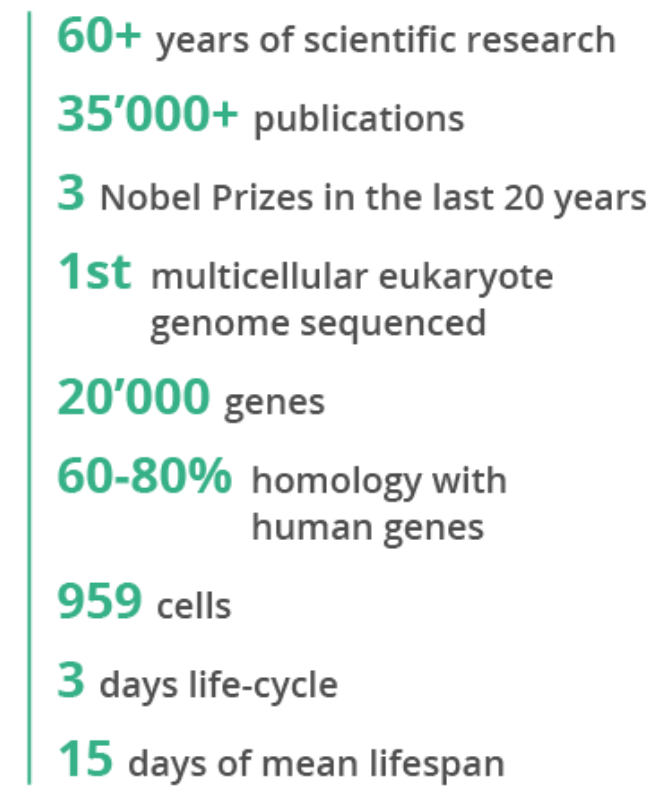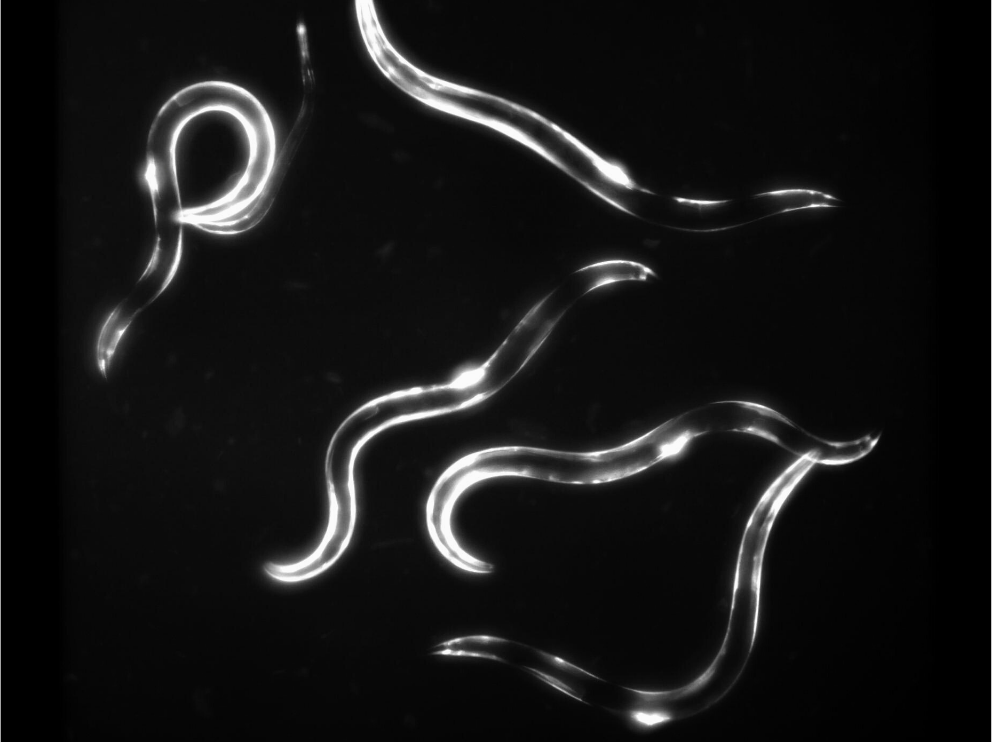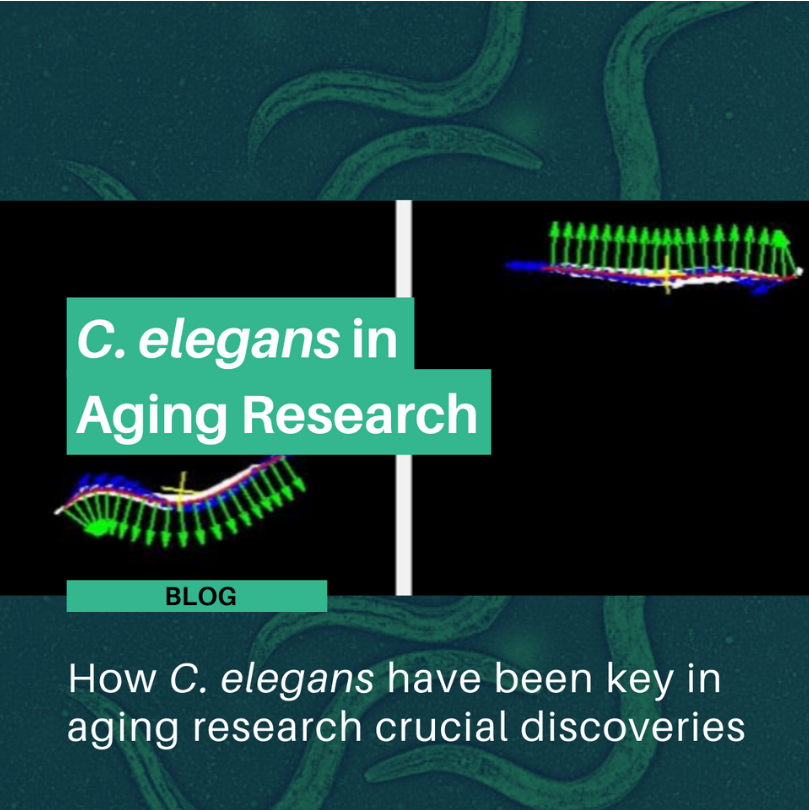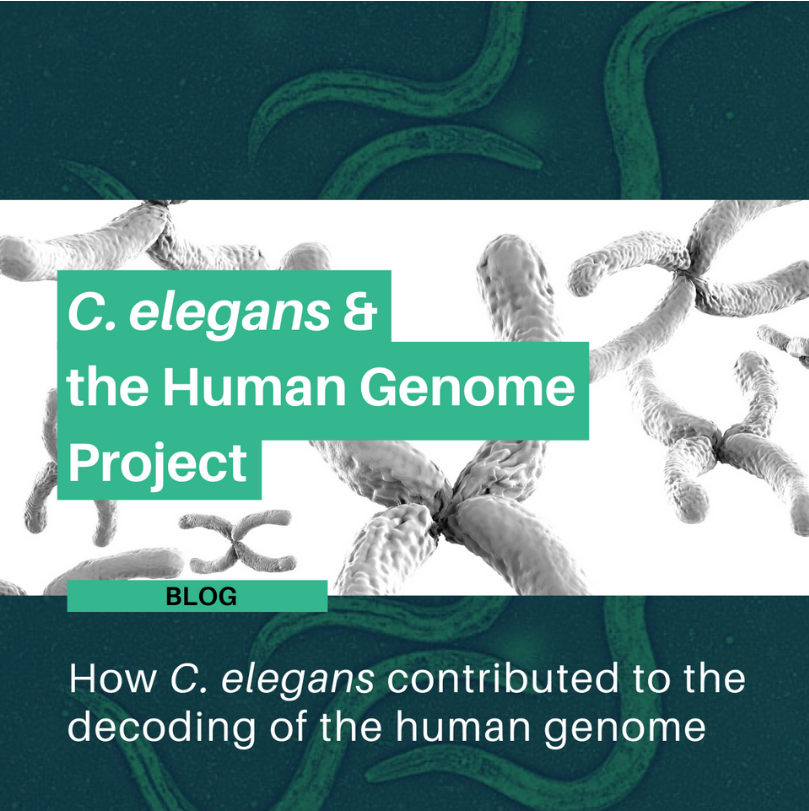
Caenorhabditis elegans has been known for over 60 years as an important exploratory organism in fundamental research. It helps in addressing various biological questions in the fields of aging, neurobiology, genomics, and developmental and cellular biology. Here are some facts to help you better know our favorite nematode.
1. Good things come in small packages
Despite its relative simplicity, C. elegans possesses multiple well defined tissues and displays an extensive variety of behaviors, ranging from locomotion or feeding to some complex social behaviors.
To this date, large amounts of mutant, transgenic and “humanized” worm strains are widely available.
C. elegans is also distinguished by the ease of genetic manipulations: single genes can be simply inactivated by feeding the worms with bacteria expressing dsRNA against the gene of interest (RNA interference method). Nowadays, any specific strain can be generated easily “on-demand” using modern CRISPR-Cas9 techniques.


2. Simplicity carried to an extreme, becomes elegance
Do you know why they are called Caenorhabditis elegans? The name is a combination of Ancient Greek and Latin: caeno and rhabditis meaning “recent” and “rod-like” respectively, and elegans meaning “elegant”.
Émile Maupas firstly described this nematode in 1900 and it was originally named Rhabditis elegans. It was not until the 50s decade when Günther Osche placed it in the subgenus Caenorhabditis and Ellsworth Dougherty raised it to the status of genus.
3. First organism genome sequenced
As you read it. In 1998, Dr. Sulston and his team achieved to complete the sequencing of the genome of C. elegans, becoming the first multicellular organism genome sequenced in history. This scientific achievement was not only setting the pillars for the Human Genome Project, but also encouraged further research on C. elegans that contributed to multiple discoveries that helped us. But no more spoilers, read Fact 5 for more.
Nonetheless, C. elegans are still nowadays the only organism to have its connectome completed, meaning that we know their complete neuronal wiring diagram. Once first, always first.
4. Three Nobel Prizes
C. elegans have contributed to many research fields but did you know C. elegans researchers have received Nobel Prizes for it?

5. Unveiling human mysteries for more than 60 years
More than 35.000 publications in more than 60 years of research. These are the numbers but, do we have examples?
C. elegans as a biological model has been fundamental in aging and longevity studies allowing groundbreaking findings about human lifespan. The Insulin/Insulin-like Growth Factor (IGF-1) signaling pathway, the very first life-extension pathway ever defined, was discovered in C. elegans. It has been later confirmed as a key regulator of lifespan and aging processes across the animal kingdom, including mammals. One of the major breakthroughs has been the discovery of the daf-2 gene, which encodes the homolog of the mammalian insulin receptor (INSR). Almost thirty years after said discovery, C. elegans continues to be one of the most popular biological models for the study of pathways regulating aging and longevity.
But C. elegans worms didn’t stop there. They also contributed to Alzheimer’s disease research, being crucial in the identification of presenilin, a protein involved in the onset of said neurodegenerative disease. Other discoveries made in the longevity research field using this biological model are the identification of essential proteins for early embryonic development, such as RNA-binding proteins, also decisive during germline formation.
In the quest for drug development, C. elegans are used for phenotype-based drug screenings, for identifying drug targets and for determining mechanisms of action. Worm strains that model neurodegenerative diseases or muscular dystrophies can help in the discovery of potential therapeutics for these disorders.
In the toxicity field, toxicity data obtained in C. elegans proved themselves to be predictive of outcomes in mammals and the LC50 ranking in C. elegans matches the LD50 ranking in mouse and rat.
Bonus fact: C. elegans are part of the New Approach Methodologies (NAMs) toolkit
The characteristics of C. elegans make them a substantially cost-effective model for drug screening, toxicity assessment and other research fields. All in all, without ethical concerns, as it is considered to be part of the New Approach Methodologies (NAMs) toolkit.
At Nagi Bioscience, we are determined to make C. elegans and other small organisms research more efficient. That is why we are developing high throughput technologies that speed up scientific advances. Interested in our technology? Here is a sneak peek of our innovative SydLab System: the first all-in-one solution for automated high-content screening on full organisms with active flow control.





